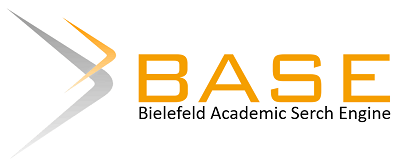Pemodelan Protein dengan Homology Modeling menggunakan SWISS-MODEL
Protein Modeling with Homology Modeling using SWISS-MODEL
DOI:
https://doi.org/10.36873/jjms.2020.v2.i2.408Keywords:
3D protein structure, homology modeling, SWISS-MODEL, struktur protein 3DAbstract
The three-dimensional (3D) structure of proteins is necessary to understand the properties and functions of proteins. Determining protein structure by laboratory equipment is quite complicated and expensive. An alternative method to predict the 3D structure of proteins in the in silico method. One of the in silico methods is homology modeling. Homology modeling is done using the SWISS-MODEL server. Proteins that will be modeled in the 3D structure are proteins that do not yet have a structure in the RCSB PDB database. Protein sequences were obtained from the UniProt database with code A0A0B6VWS2. The results showed that there were two models selected, namely model-1 with the PDB code template 1q0e and model-2 with the PDB code template 3gtv. The results of sequence alignment and model visualization show that model-1 and model-2 are identical. The evaluation and assessment of model-1 on the Ramachandran Plot have a Favored area of ??97.36%, a MolProbity score of 0.79, and a QMEAN value is 1.13. Model-1 is a good 3D protein structure model.
Downloads
References
Wijaya, H. dan F. Hasanah, 2016. Prediksi Strukur Tiga Dimensi Protein Alergen Pangan Dengan Metode Homologi Menggunakan Program SWISS_MODEL, BioPropal Industri, Vol. 7 No.2, Desember 2016: 83-94, https://media.neliti.com/media/publications/53193-ID-none.pdf
Zaki MJ, Bystroff C., 2008. “Protein structure prediction, Preface”, Methods Mol Biol. 2008;413:v-vii. doi:10.1007/978-1-59745-574-9
Saudale, Fredy. (2020). Pemodelan Homologi Komparatif Struktur 3d Protein dalam Desain dan Pengembangan Obat. Al-Kimia. 8. 10.24252/al-kimia.v8i1.9463.
Kopp, J., Bordoli, L., Battey, J. N. D., Kiefer, F. & Schwede, T. (2007). Assessment of CASP7 predictions for template-based modeling targets. Proteins, 69 Suppl., 8, 38-46. doi:10.1002/prot.21753.
Hillisch A, Pineda LF, Hilgenfeld R. Utility of homology models in the drug discovery process. Drug Discov Today. 2004;9(15):659-669. doi:10.1016/S1359-6446(04)03196-4
Waterhouse, A., Bertoni, M., Bienert, S., Studer, G., Tauriello, G., Gumienny, R., Heer, F. T., de Beer, T., Rempfer, C., Bordoli, L., Lepore, R., & Schwede, T. (2018). SWISS-MODEL: homology modelling of protein structures and complexes. Nucleic acids research, 46(W1), W296–W303. https://doi.org/10.1093/nar/gky427
Pearson W. R. (2013). An introduction to sequence similarity ("homology") searching. Current protocols in bioinformatics, Chapter 3, Unit3.1. https://doi.org/10.1002/0471250953.bi0301s42
Prastari, C., S. Yasni, M. Nurilmala, 2017. Karakteristik Protein Ikan Gabus Yang Berpotensi sebagai AntiHiperglikemik, Jurnal Pengolahan Hasil Perikanan Indonesia (JPHPI), Volume 20 Nomor 2: 413-423, DOI: http://dx.doi.org/10.17844/jphpi.v20i2.18109
Bordoli, Lorenza & Kiefer, Florian & Arnold, Konstantin & Benkert, Pascal & Battey, James & Schwede, Torsten. (2009). Protein structure homology modelling using SWISS-MODEL workspace. Nature protocols. 4. 1-13. 10.1038/nprot.2008.197.
Kumaresan V, Gnanam AJ, Pasupuleti M, et al. Comparative analysis of CsCu/ZnSOD defense role by molecular characterization: gene expression-enzyme activity-protein level. Gene. 2015;564(1):53-62. doi:10.1016/j.gene.2015.03.042
Seetharaman, S.V., Taylor, A.B., Holloway, S., Hart, P.J. (2010) Structures of mouse SOD1 and human/mouse SOD1 chimeras. Arch Biochem Biophys 503: 183-190. PubMed: 20727846, DOI: 10.1016/j.abb.2010.08.014
Hough, M.A., Hasnain, S.S. (2003). Structure of fully reduced bovine copper zinc superoxide dismutase at 1.15 A. Structure 11: 937-946 PubMed: 12906825. DOI: 10.1016/s0969-2126(03)00155-2
Baker, D. & Sali, A. (2001). Protein structure prediction and structural genomics. Science (New York, N.Y.), 294(5540), 93–6. doi:10.1126/science.1065659.
Bordoli, L., Kiefer, F., Arnold, K., Benkert, P., Battey, J. & Schwede, T. (2009). Protein structure homology modeling using SWISS-MODEL workspace. Nature Protocols, 4(1), 1–13. doi:10.1038/ nprot.2008.197.
Sharma, Sunny & Sarkar-Banerjee, Suparna & Paul, Simanta & Roy, Syamal & Chattopadhyay, Krishnananda. (2014). srep03525-s1.
Chen, V. B., Arendall, W. B., 3rd, Headd, J. J., Keedy, D. A., Immormino, R. M., Kapral, G. J., Murray, L. W., Richardson, J. S., & Richardson, D. C. (2010). MolProbity: all-atom structure validation for macromolecular crystallography. Acta crystallographica. Section D, Biological crystallography, 66(Pt 1), 12–21. https://doi.org/10.1107/S0907444909042073
Downloads
Published
How to Cite
Issue
Section
License
Copyright (c) 2021 Jurnal Jejaring Matematika dan Sains

This work is licensed under a Creative Commons Attribution-NonCommercial-ShareAlike 4.0 International License.

















